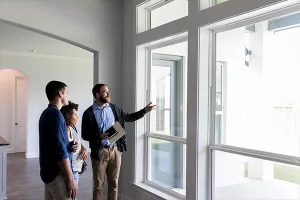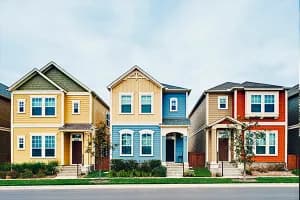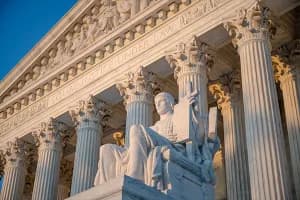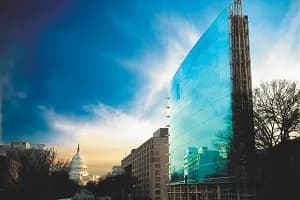It’s time to re-think how to achieve community resilience.
“Improving resilience is about much more than just reducing disaster-related risk. Community resilience needs to address not just environmental factors, but quality of life and economic prosperity…This holistic view is helping communities think beyond catastrophes and evolve into thriving places with more potential and promise than before.” Sarene Marshall, executive director of ULI’s Center for Sustainability.
So why not address community resilience in the context of placemaking where the community would also benefit by gaining a new destination, green or public space to visit and enjoy.
It is likely that weather-related disasters will occur more frequently and in greater severity in the future. Whether cities are motivated by the threat of future storms or the need to maintain a tighter budget, Placemaking should be considered as another strategy to create resilient cities. Placemaking works to build and nurture a relationship between people and their environment.
More and more cities are citing the need to contend with the effects of extreme weather and changing rainfall patterns. But building more walls and berms only serves to cut of a community and people from places and environments along a coastline. The focus should be to repurpose and adapt design criteria that not only provides resilience but also creates places that are welcoming and inviting for people such as parks, promenades, boulevards, and terraces
Rather than relying on concrete walls to keep water out, projects can be designed to handle flooding without damage and to allow stormwater to drain easily and quickly. There is now more awareness of creating public spaces that can also help to better manage stormwater. José Almiñana, a Principal with Andropogon Associates reiterates this: “We need to produce public spaces to actually be able to absorb all kinds of events and become more resilient.”
As an example, the idea behind Shoemaker Green, a new park at the University of Pennsylvania in Philadelphia, was to create a “large bathtub” to capture and recycle the stormwater and HVAC runoff from the surrounding buildings. Shoemaker Green not only offers an open space of lawns, tree-lined walkways, and sitting areas but will also improve water quality and minimize runoff, reduce the effect of the urban heat island by greening large paved areas, restore biomass on site, increase local biodiversity, and improve the overall environment for the community.

In San Antonio, plans are underway to develop Hemisfare, the city’s old fairgrounds and site of the 1968 World’s Fair, not only includes having it become an oasis of activities, amenities, and destinations centered on a series of parks but also features to conserve and protect the local aquifer and connect to the city’s famed River Walk. Plans call for a graded site that will collect water, channel it and connect it to the River Walk.

The Bradenton Riverwalk in Florida created a riverfront promenade that includes two dozen works of public art, a playground, fishing pier, botanical walk and skate park. But, it also incorporates a new bioswale treatment system to filter stormwater before it reaches the river.

And, in Long Island City, NY Hunter’s Point South Park is a 10-acre park which includes a playground, dog run and an urban beach but was designed to handle storm surges. A “rail garden” with native grasses, chosen for their ability to survive exposure to saltwater, and flowers marks the path of the rail line that once ran along the river. The park, even before completion, successfully shed floodwaters when Hurricane Sandy struck in 2012.

The BIG U proposal was developed to protect Lower Manhattan from floodwater, storms, and other impacts of a changing climate. The BIG U calls for a protective system around the low-lying topography of Manhattan beginning at West 57th Street, going down to The Battery, and then back up to East 42nd Street. A proposed Bridging Berm will both protect the area from storm surges and rising sea levels, and offer waterfront access for relaxation, socializing, and enjoying river vistas by providing pleasant, accessible routes over the highway into the park. Additionally, salt-tolerant trees and plants will provide a resilient urban habitat.

The future of resilient cities depends on residents, and their investment in, and involvement with, the places in which they live. And, efforts need to include making residents aware of the damages natural events have on our shared built and natural environments.
The winning concept of the Memorials for the Future ideas competition, sponsored by the National Park Service and the National Capital Planning Commission, was Climate Chronographpdf. The competition sought to reimagine the way we develop and experience memorials in Washington, DC, and inspire new memorial approaches around the country.
The proposed memorial project, for a site at Hains Point in Washington, DC, is to be a public record of rising sea levels and a living observatory for an indeterminate emergent process. While memorials conventionally commemorate a moment in the past, this initially traditional-looking memorial offers a reimagined landscape and a living observatory that allows people to interact with the space as it evolves unpredictably over time. Interpretive signage would illustrate the site’s history, the memorial’s concept, and the slow successionary processes at work. The advancing water’s edge becomes a fecund place for exploration, observation, and learning. Not only would this project create a new destination but it would also educate and inspire those who visit it.

Several REALTOR® Associations are incorporating resilience into their placemaking projects. The Greater Fairfield Board of REALTORS®(CT) created a pocket park to educate visitors on sustainable gardening and native plants. The park features plants such as echinacea, swamp milkweed, coreopsis and golden rod, designed to attract birds, bees and butterflies to the park. The park also includes boulders used as places to sit, a more natural option in lieu of benches.

So, as you plan a placemaking project in 2018, you may also want to think about how the new destination can also help to make your community more resilient.









